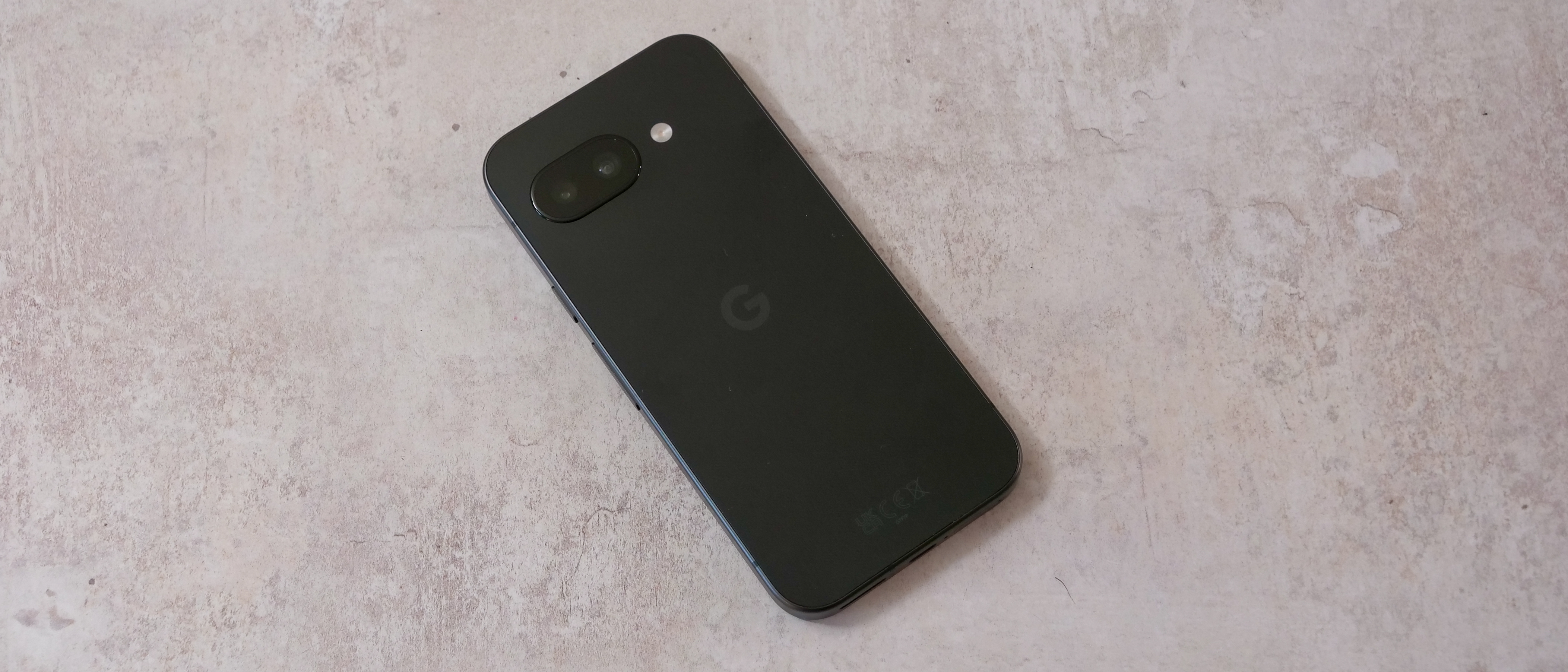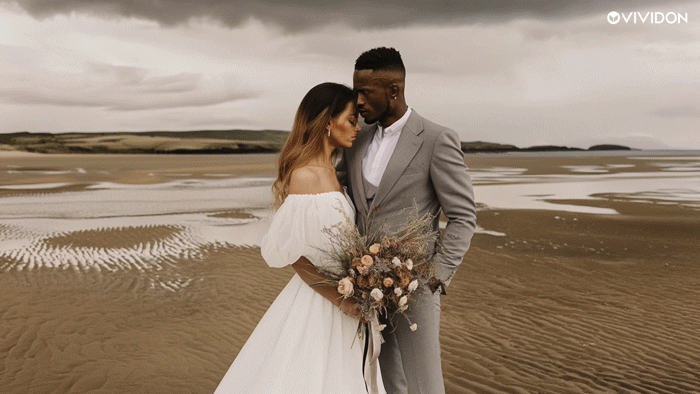Digital Camera World Verdict
The Pixel 9a crams Google’s flagship internals and a clean, stock interface into a lower-cost package than the Pixel 9 and 9 Pro, but camera sacrifices hold it back. While it isn’t the best camera phone you can get at its price, it still takes balanced photos that look great in bright environments or when paired with a steady hand or still subjects. With improved battery life, excellent future-proofing and surprisingly competitive gaming performance, there’s plenty of value on offer to tempt casual photographers.
Pros
- +
Typically balanced photo processing
- +
Macro focus is great
- +
Wireless charging and long-lasting battery life
- +
Excellent long-term software support
Cons
- -
Weak ultra-wide camera, especially for video
- -
Basic styling won’t be for all
- -
Chunky bezels frame the screen
- -
Can be slow to process photos
Why you can trust Digital Camera World
The Pixel 9a could be one of the most sensible phones to buy in 2025. It has a big battery, years of future-proofing courtesy of Google, and it also has the same processor for near-flagship-grade (by Pixel standards) gaming. Of course, when the price goes down, so too do some features, and the Pixel 9a’s camera is arguably the area that’s been hit hardest.
The dual-camera mix combines a 48MP wide and 13MP tele camera with a 13MP selfie camera. While the pixel counts aren’t alarming, the main camera sensor is smaller than last year’s Pixel 8a.
Going up against the Samsung Galaxy A56 5G and Nothing Phone (3a) and (3a) Pro, Xiaomi 14T Pro, and other not-quite-flagships, would you be better off spending a bit more and getting a few fewer compromises, or is the Pixel 9a a winning balance of value and substance?
Google Pixel 9a: design and screen
The Pixel 9a is a compact metal and plastic phone with a glass front. As with all Pixels, it’s available in some fun color options, with Obsidian (black) and Porcelain (white) being safe choices, and Iris (blue) and Peony (pink) adding a bit of pop to the line.
Despite its modest 6.3-inch display size, the chunky bezels, flat sides, and almost 9mm profile ensure the Pixel 9a doesn’t feel particularly slender or futuristic. It's a chunky phone with a relatively compact footprint, but it definitely isn’t a waif.
With IP68 water and dust resistance and Gorilla Glass 3 on the front, the 9a competes with phones like the Poco X7 Pro when it comes to durability, and it’s great to see this level of life-proofing available on more affordable devices.
The phone has two speakers, pumping most of the sound from the bottom and about 20 percent from the earpiece above the screen. The power button and volume rocker on the right side are responsive with satisfying click feedback, and the in-display fingerprint scanner is quick to unlock the Pixel 9a securely.
The best camera deals, reviews, product advice, and unmissable photography news, direct to your inbox!
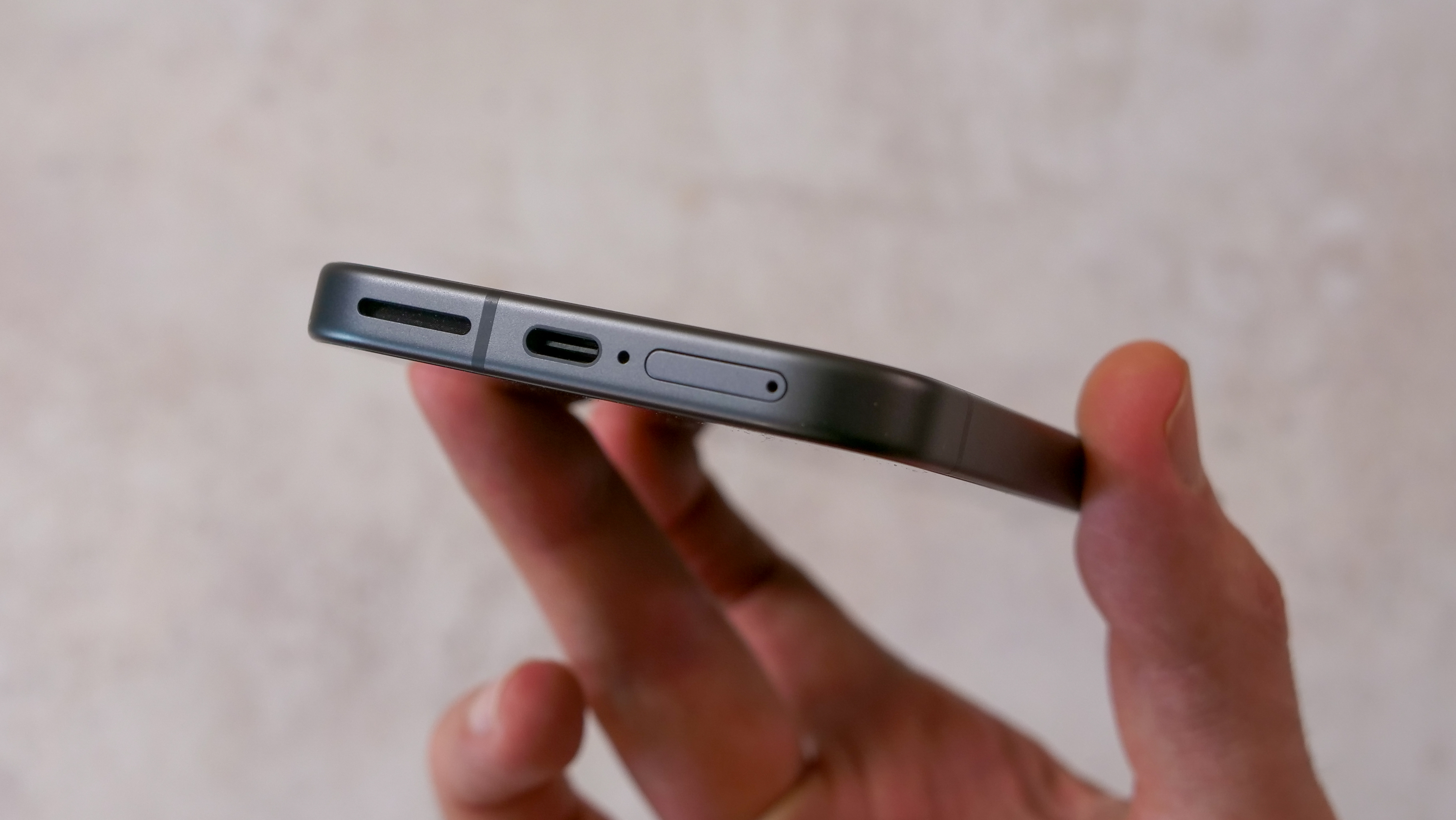
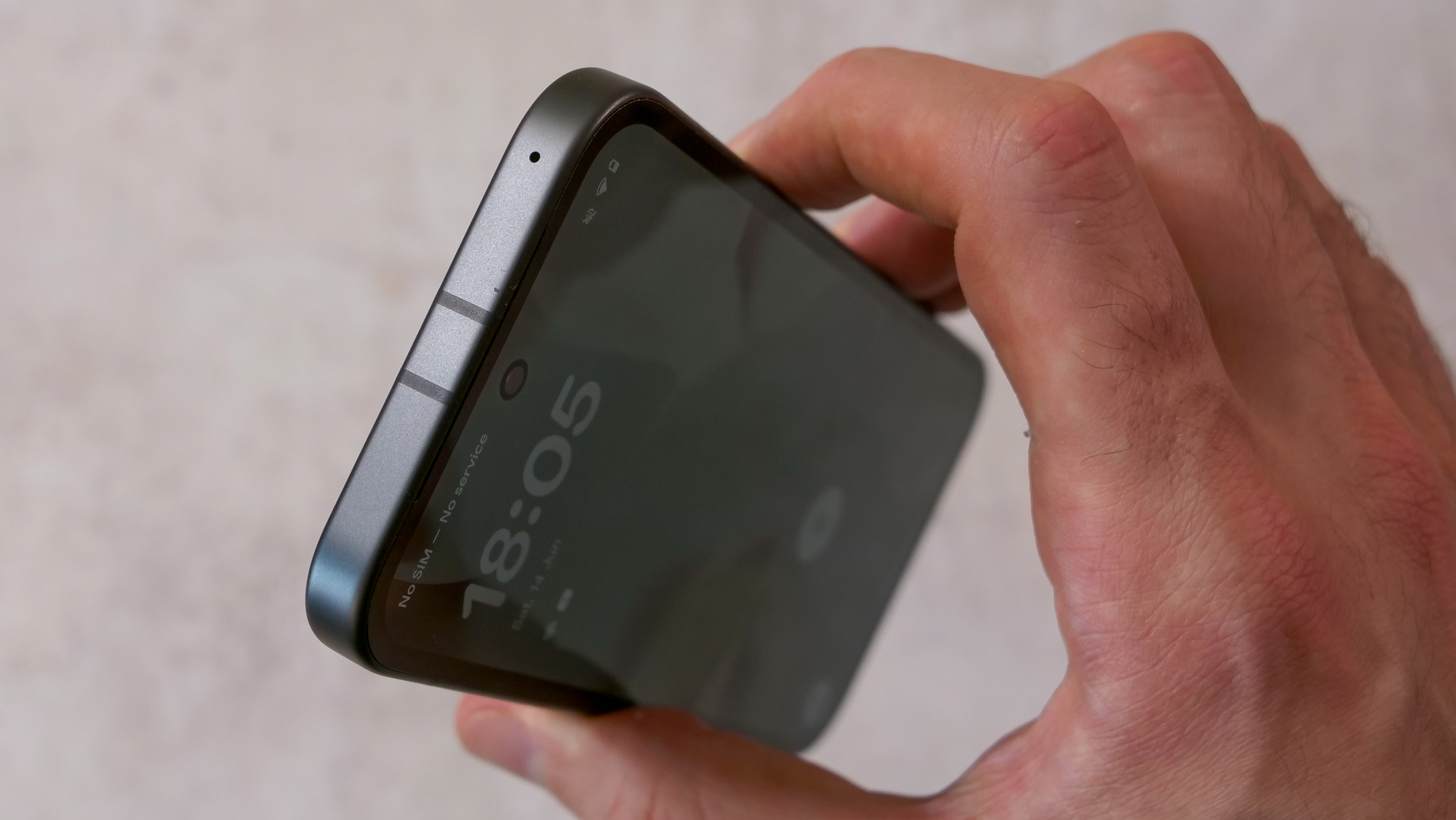
The ultra-slim camera bump (it feels excessive even calling it a bump) is a serious novelty. In an era of phones piling on the pounds up top to make their cameras look like they mean business, Google goes old-school and chases a subtler aesthetic, even bucking its own trend across the rest of the Pixel 9 family. Considering midrange phones don’t typically have huge camera modules, I’m more than happy with this design choice, just as long as it doesn’t mean worse cameras and, in turn, photos and videos.
As for the Pixel 9a’s 6.3-inch screen, it’s very manageable when using the phone one-handed, so the size is an instant win for anyone tired of big phones that are a serious stretch for thumbs and fingers. It’s also a quality screen with its smooth 120Hz refresh rate and crisp 422 pixel-per-inch panel. Being OLED, blacks are inky and colors pack punch, and with a peak outdoor brightness of 1800 nits (2700 nits spot brightness for HDR content), it’s easy to see indoors and out.
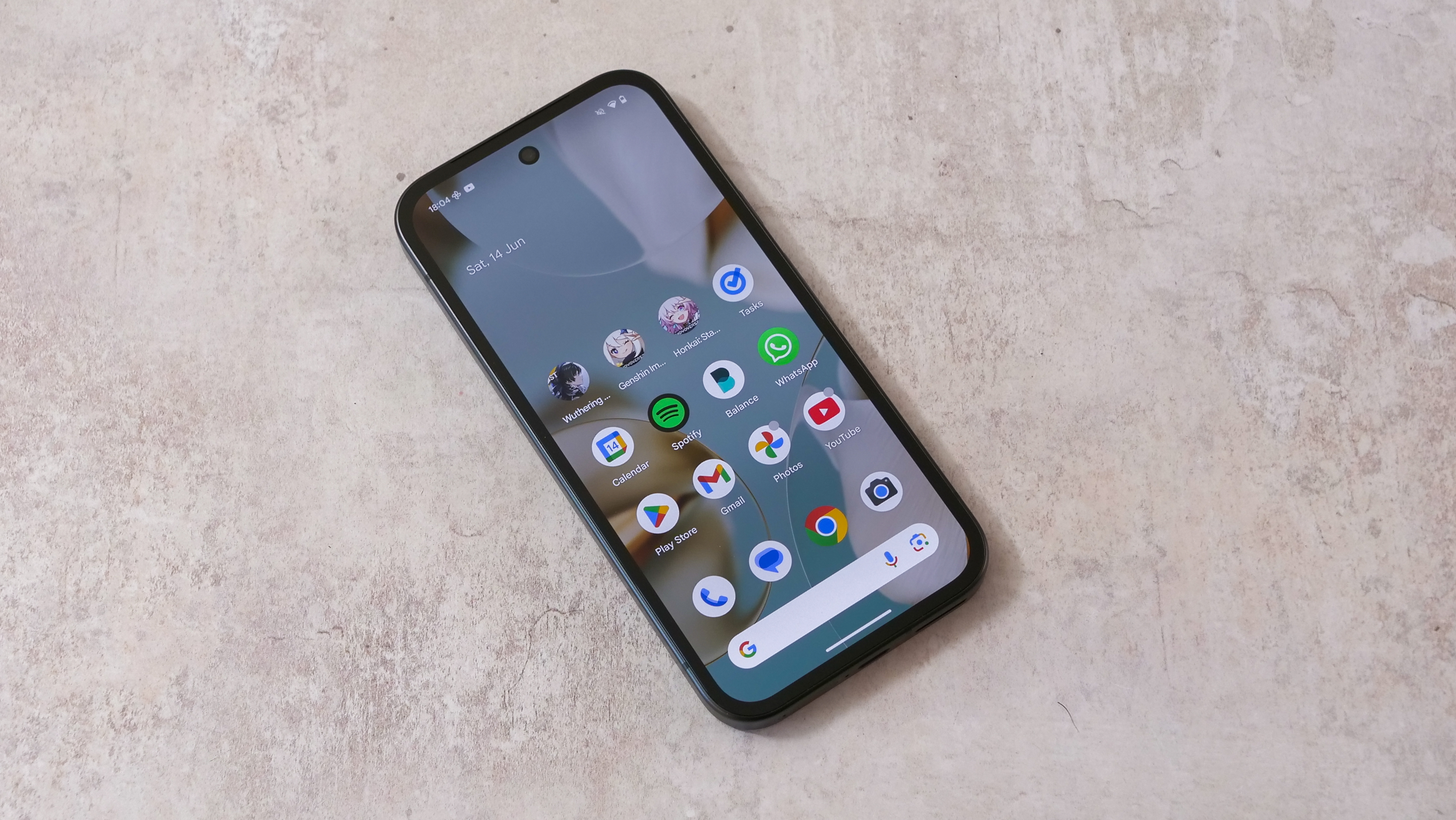
So if you can get past the almost Duplo-esque simple styling and 2020-grade chunky bezels framing the screen, the Pixel 9a ticks a lot of boxes, especially for anyone tired of camera bumps and big screens.
Google Pixel 9a: camera specs
Google opted for a 48MP primary camera for the Pixel 9a, flanked by a 13MP ultra-wide camera. It’s a familiar setup, but interestingly, the 9a has a significantly smaller main sensor than last year’s Pixel 8a (a 1/2-inch size compared to the 1/1.73-inch 8a sensor), albeit a faster f/1.7 aperture. Its new lens packs a superpower beyond f-stop – it focuses as near as roughly 8cm – adding extra versatility to the mix.
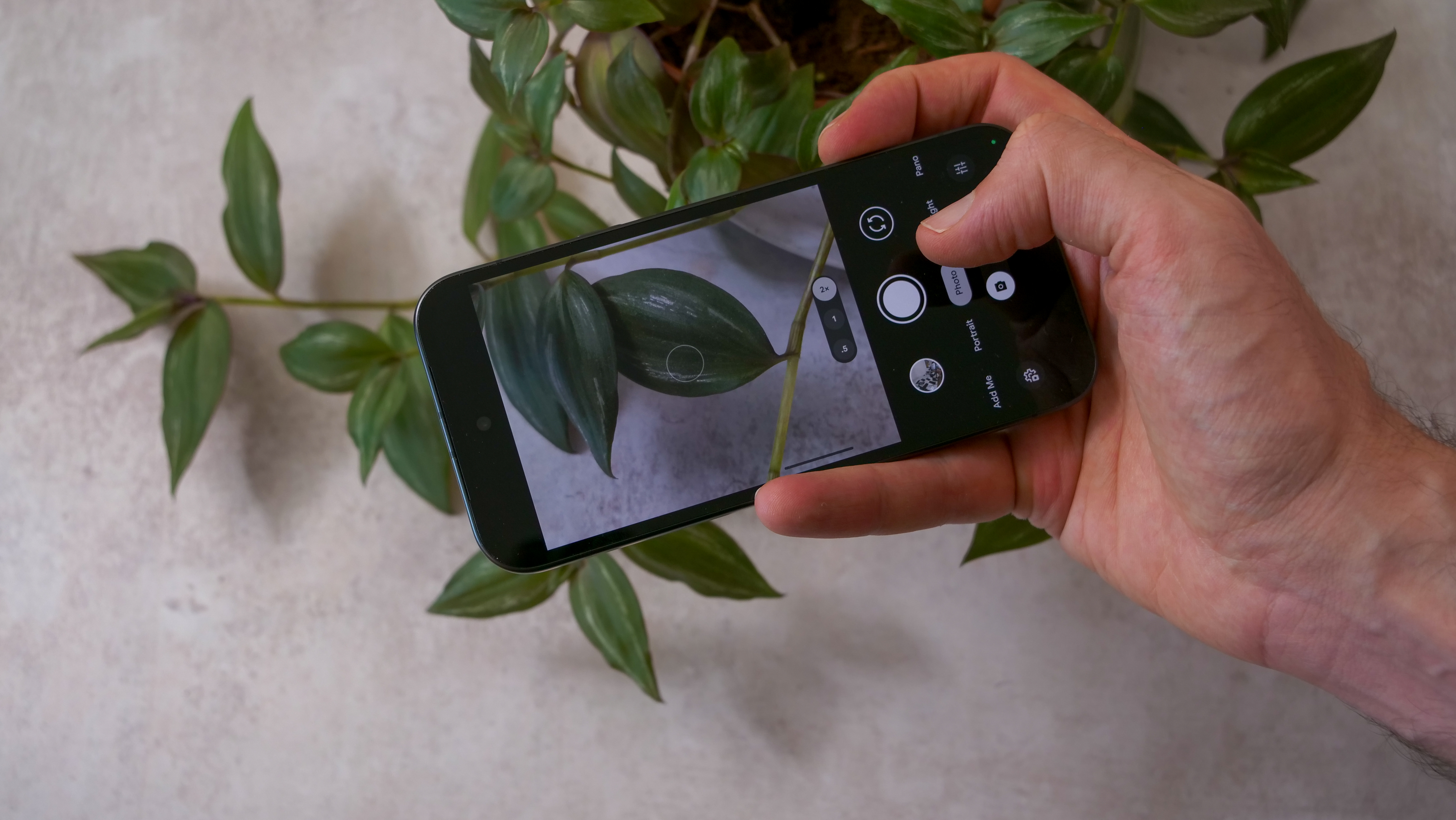
25mm 50MP primary camera: 1/2-inch sensor with f/1.7 aperture lens, dual-pixel PDAF and OIS
16mm 13MP ultra-wide camera: 1/3.1-inch sensor with f/2.2 aperture lens (no AF)
20mm 13MP selfie camera: 1/3.1-inch sensor with f/2.2 aperture lens (no AF)
In addition to a new primary camera, the Pixel 9a also packs Google’s fun photo features including Add Me for double-exposure group shots with some computational magic, as well as Google’s notoriously balanced photo processing. There’s no Pro mode per se, so manual shutter speed and ISO are out of the question, however, exposure, shadows and white balance can all be adjusted for photos.
Video is captured at up to 4K resolution 60fps from the Pixel 9a’s main camera and 4K 30fps from the ultra-wide camera, with 60fps ultra-wide footage locked to 1080p.
Google Pixel 9a: camera performance
Considering the Pixel 9a’s camera specs, the phone is a testament to Google’s impressive photo processing, with shots taken in bright environments looking excellent, with balanced exposure, vibrant colours and dynamic-looking contrast.
Shadow detail is abundant, in-sensor zoom is strong at up to 2–3x zoom depending on lighting, and even when you pull out to the ultra-wide camera, quality holds, making the 9a a great shout for anyone who tends to shoot in daylight conditions.
An area the Pixel shines is close-up photography, with the 9a’s macro lens able to snap close-up subjects with luscious blurry backgrounds and shallow but natural-looking focus.
When the lights drop, the 9a doesn’t drop the ball – at least not for photos. Google’s Night Sight and computational photography magic kick in to boost and clarify stationary subjects even in challenging scenes, though moving subjects are more hit and miss.
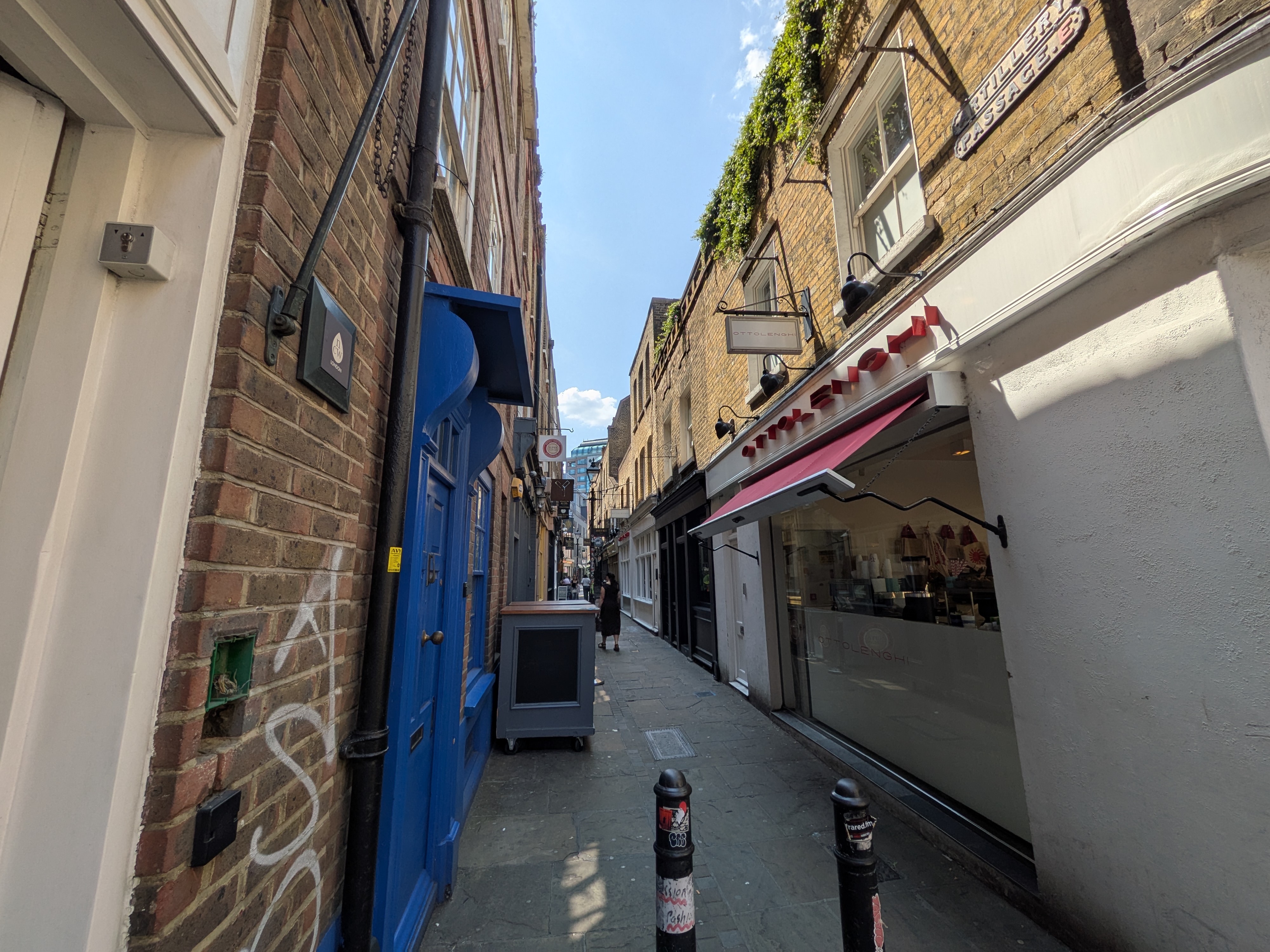
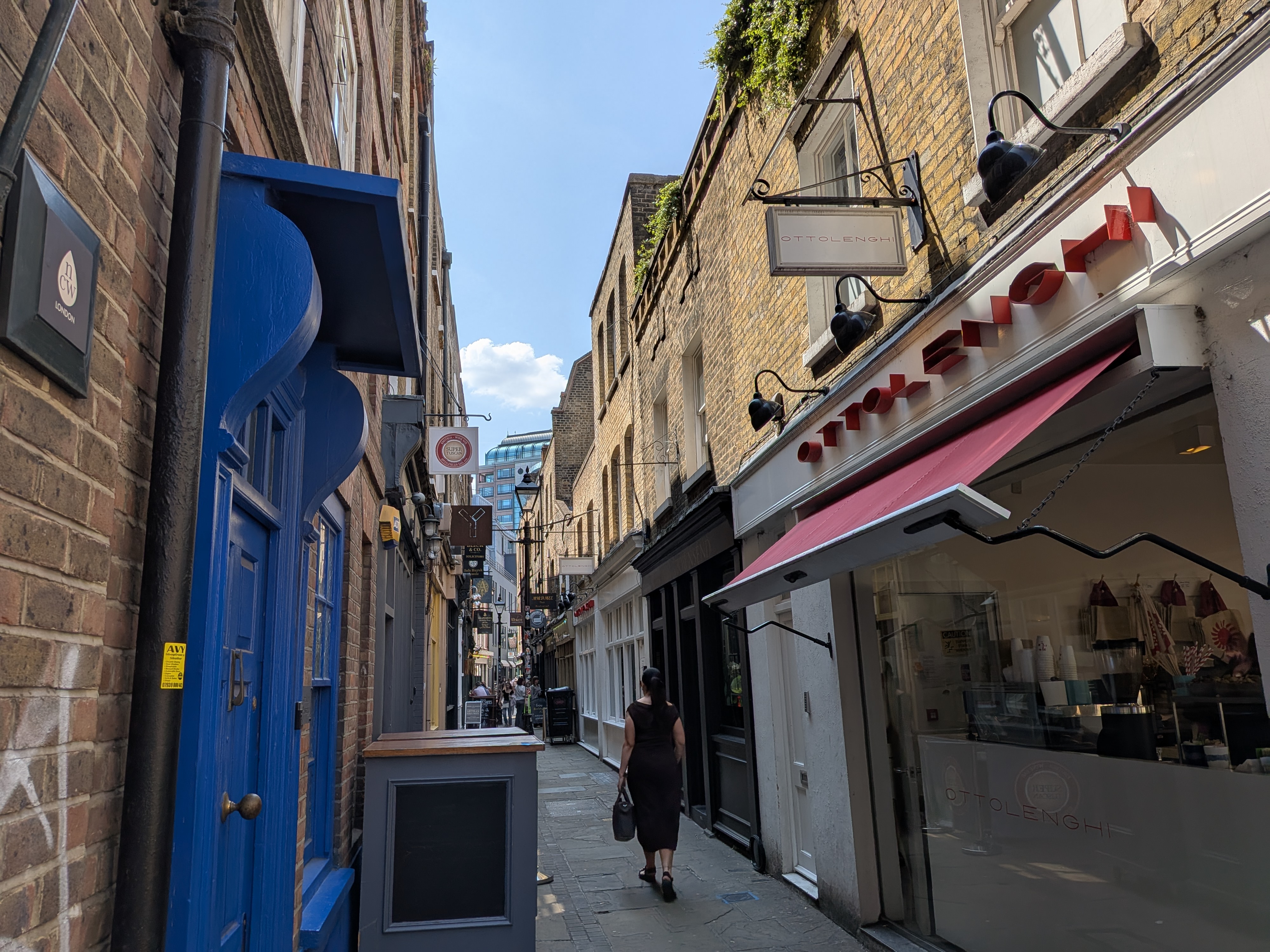
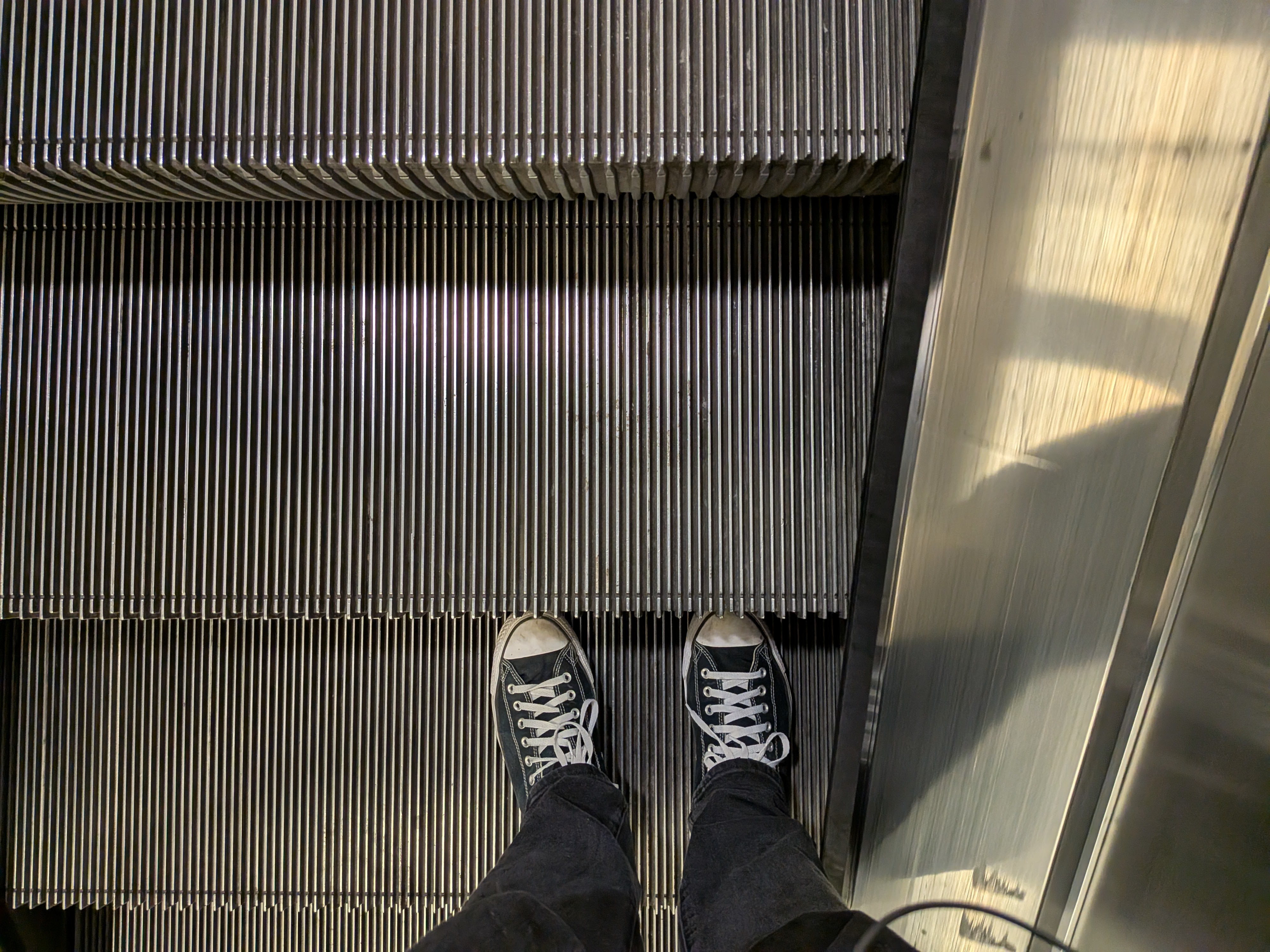
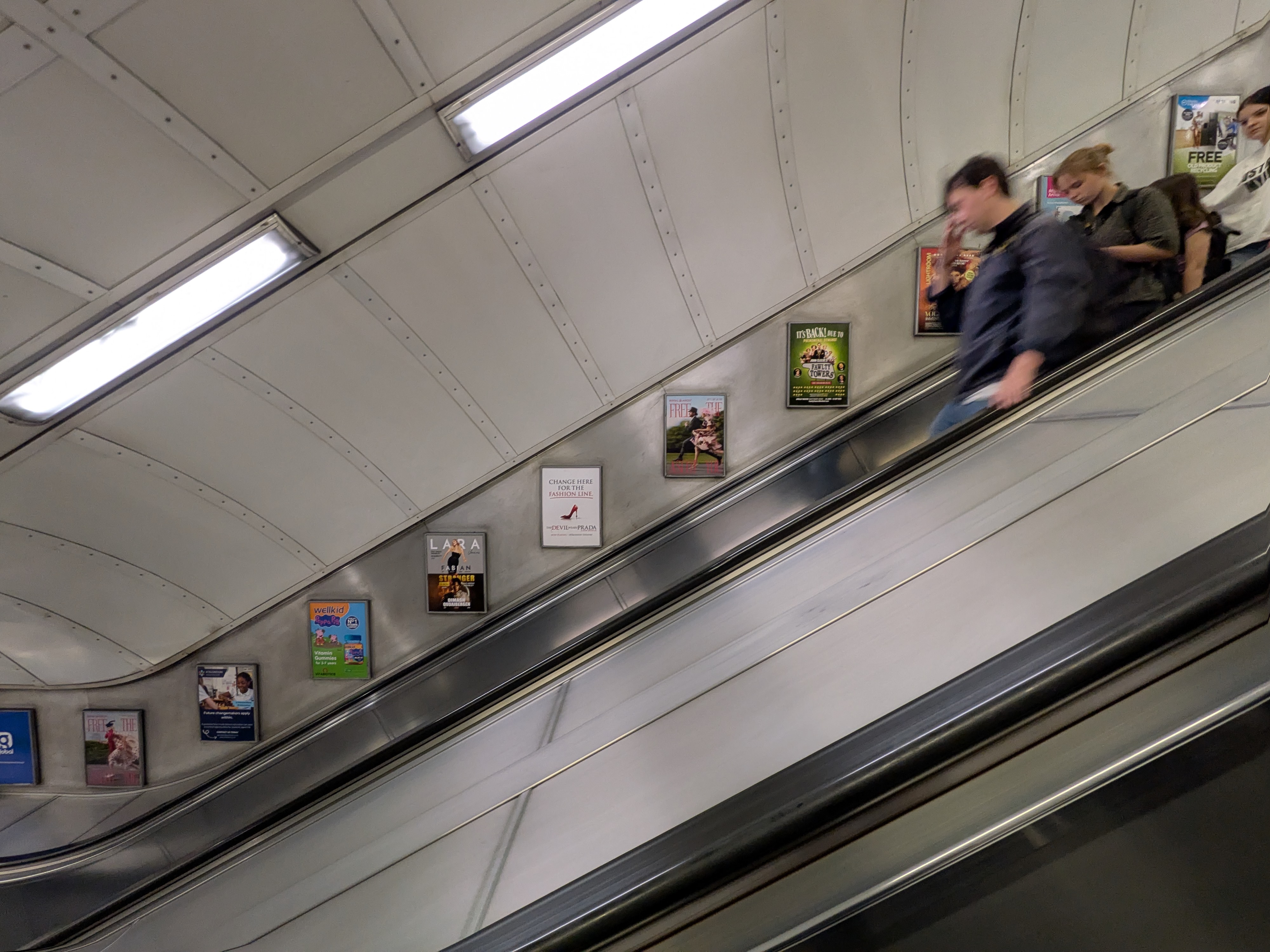
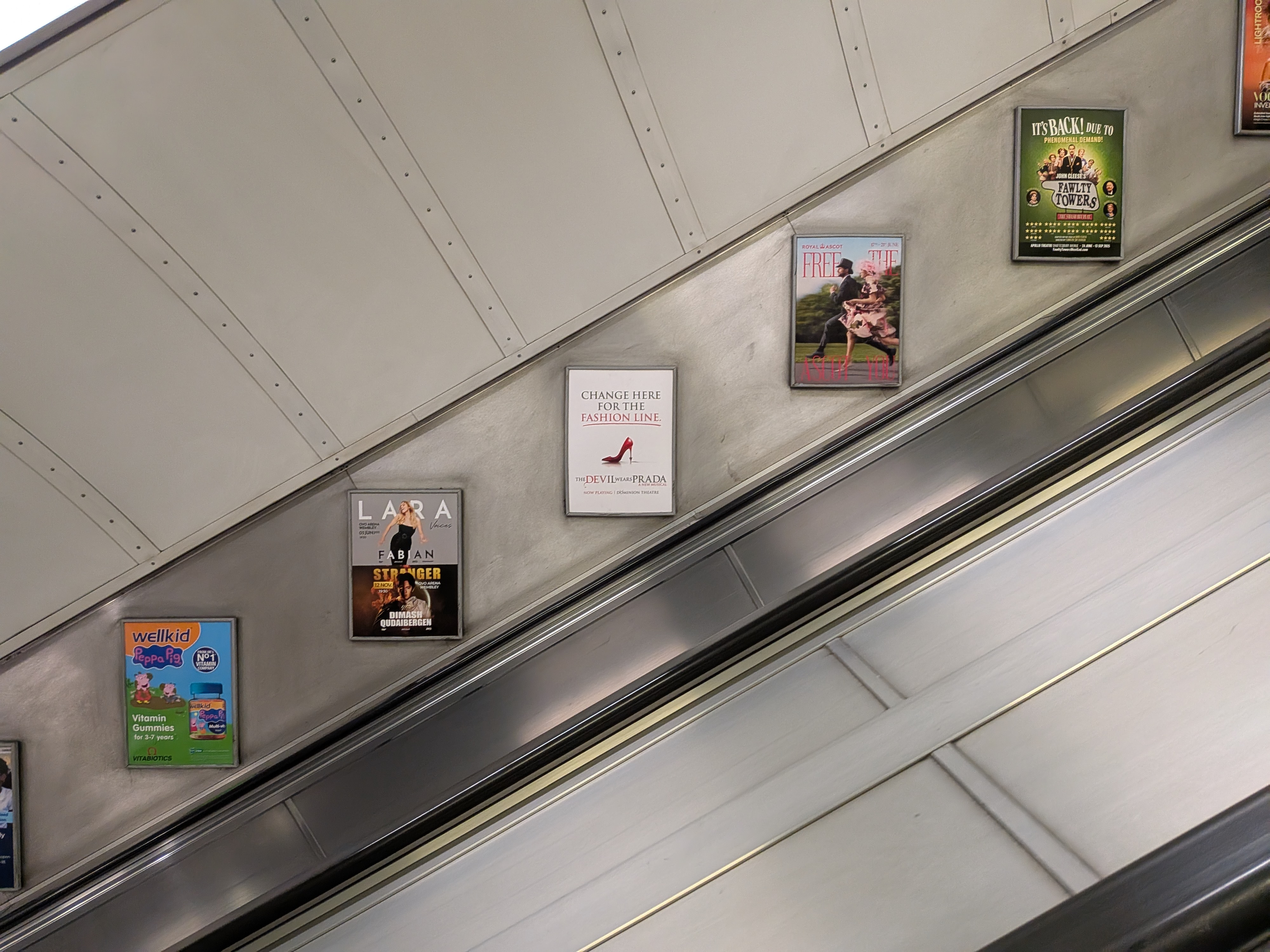

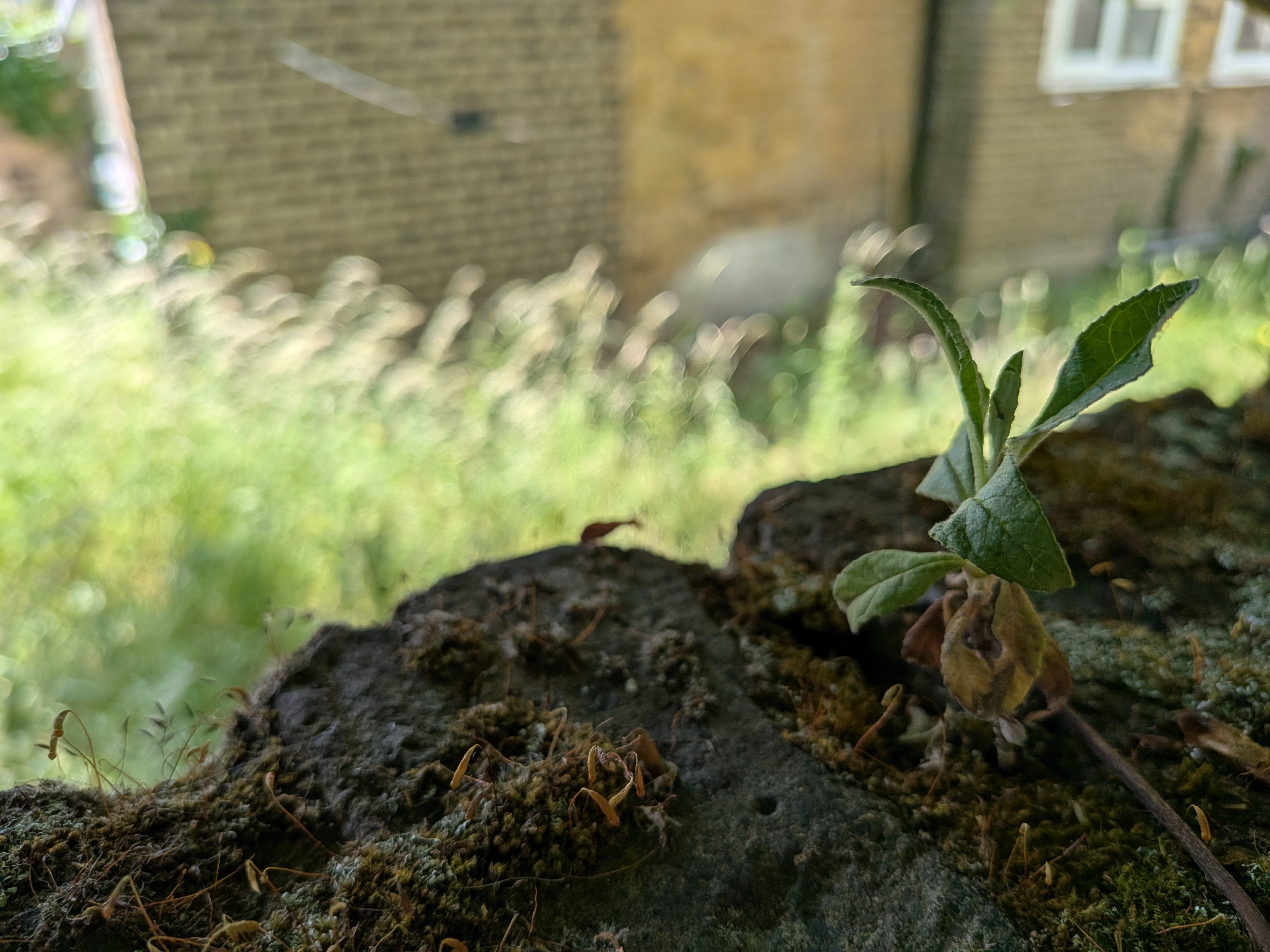
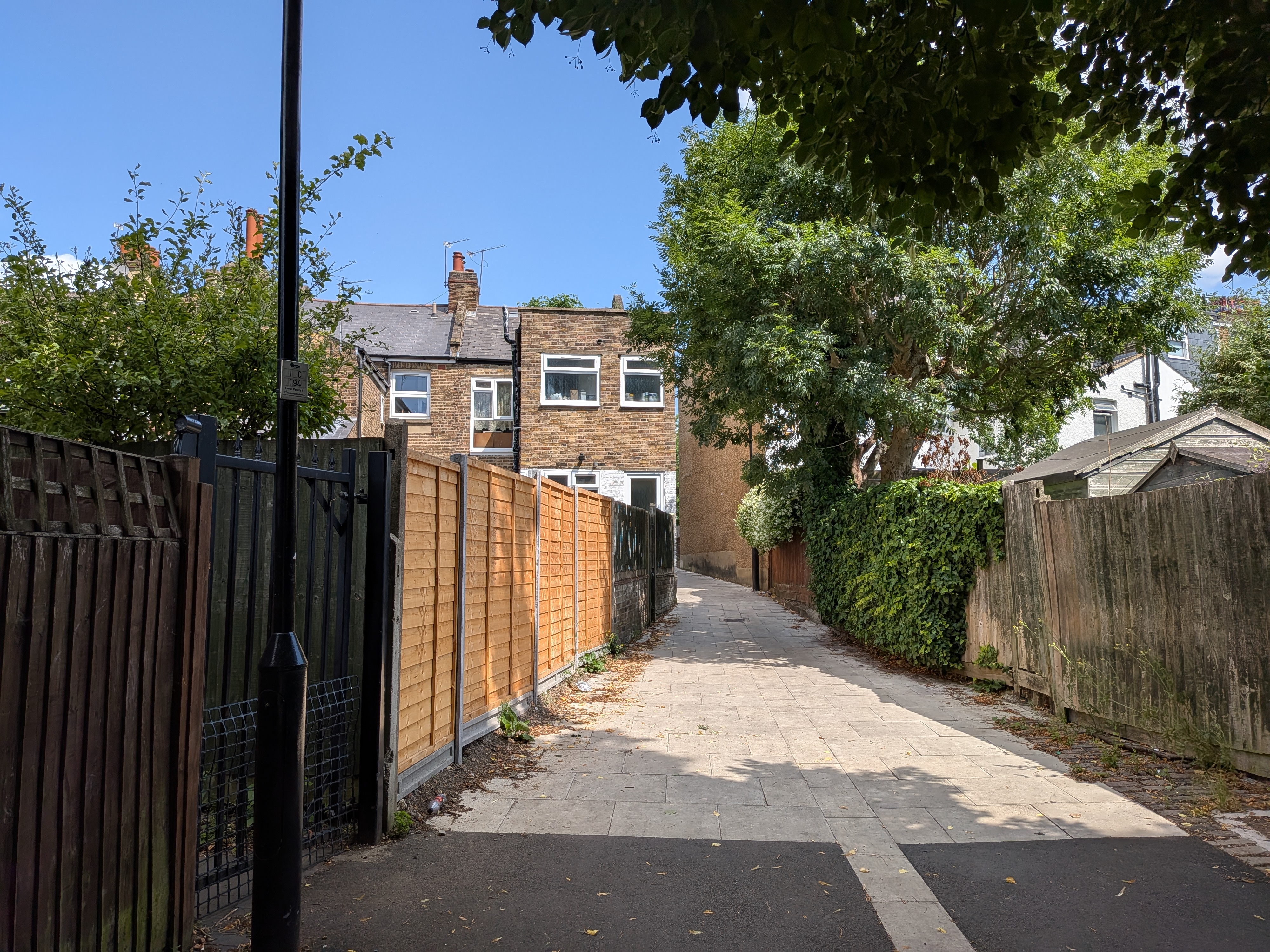
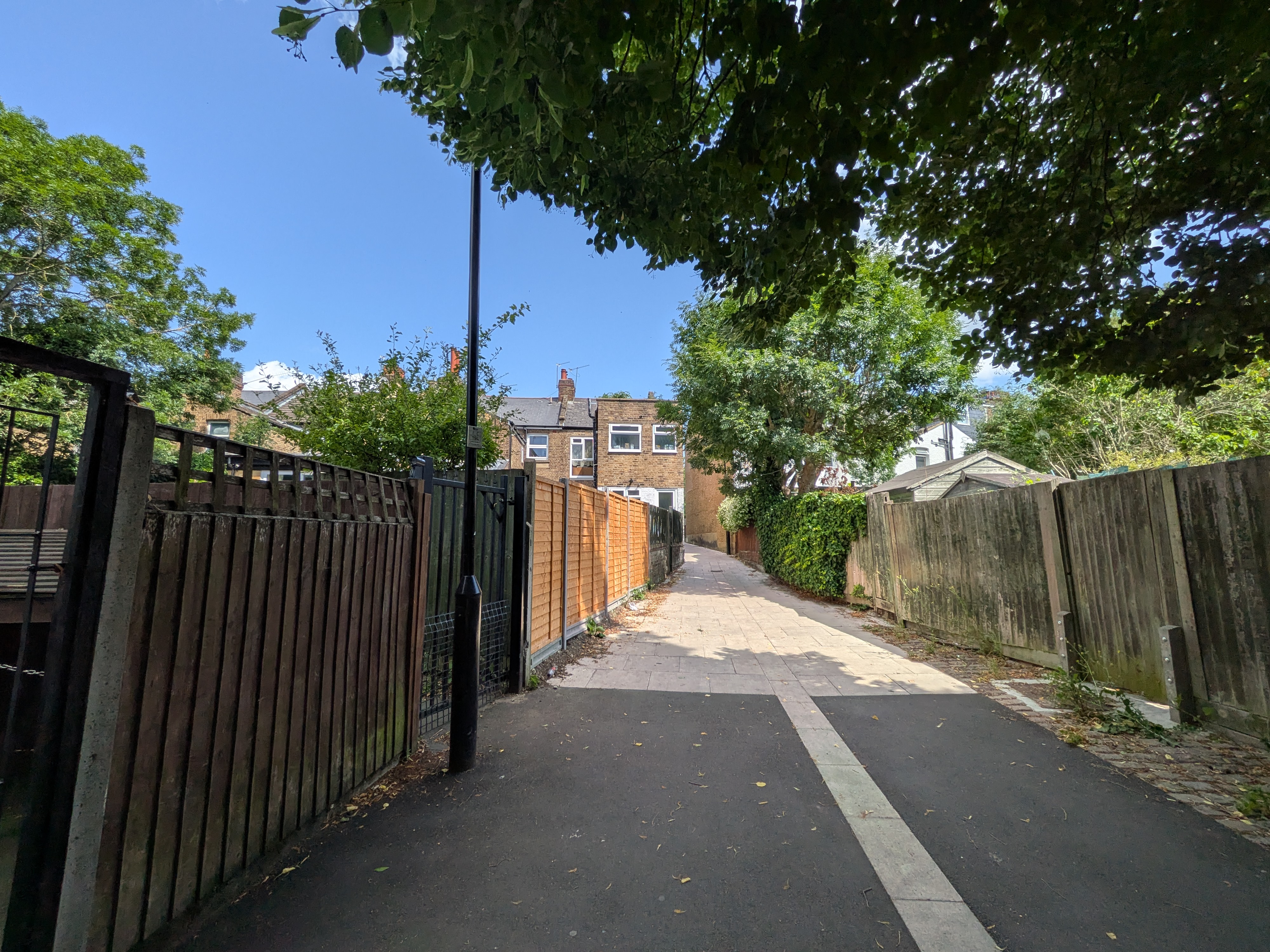
Another byproduct of the Pixel 9a heavily leaning on computational photography is longer processing times, especially for the ultra-wide camera. For anyone looking for an all-purpose night snapper, the 9a could let you down.
Video is the main area where the Pixel 9a’s hardware holds it back. In bright scenes, it looks good with the macro focus shining once again from the main camera; however, low-light video is bad. Not even Google’s computing magic can clean up the noisy night footage the 9a captures, especially from the ultra-wide camera.

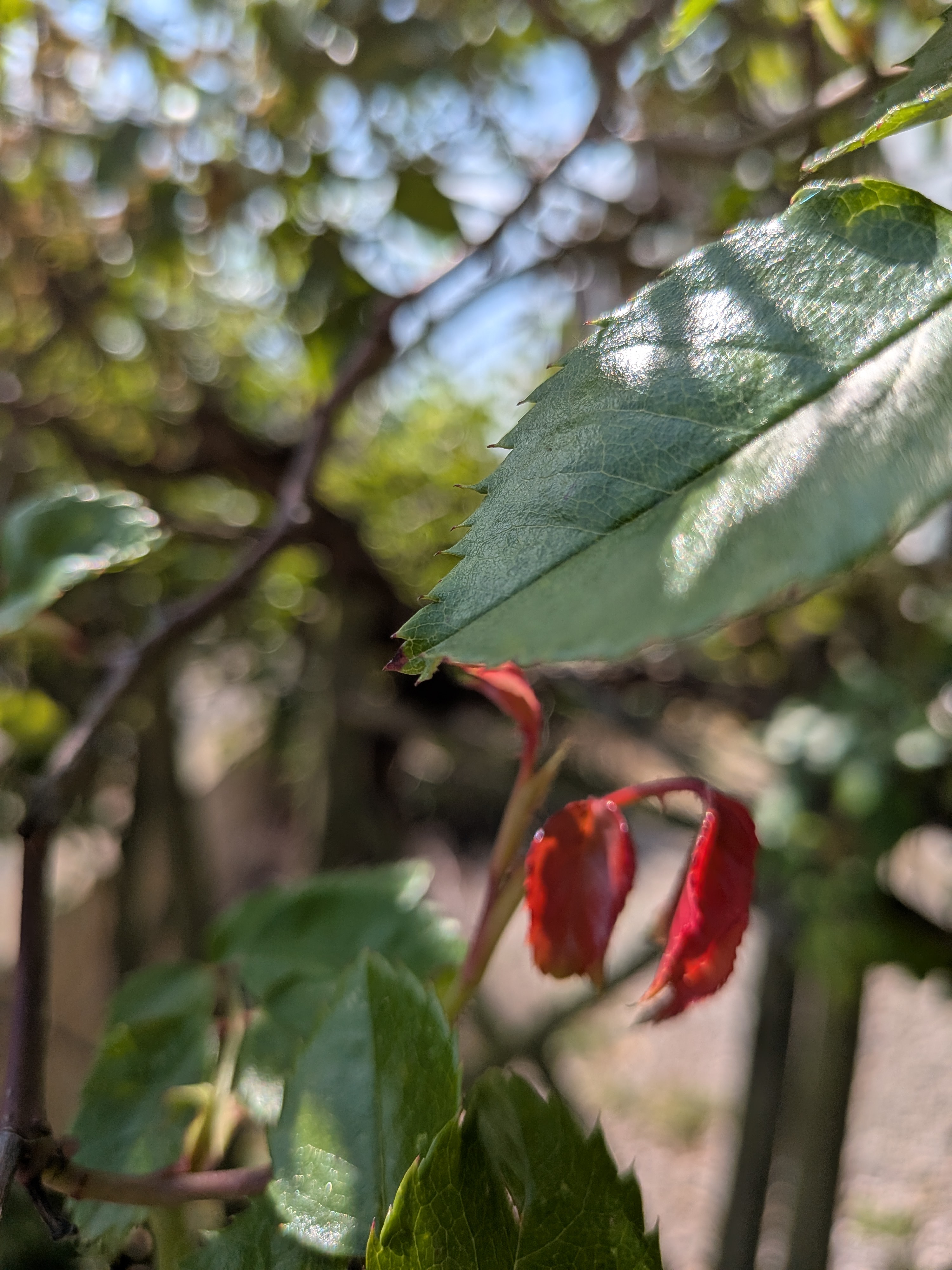
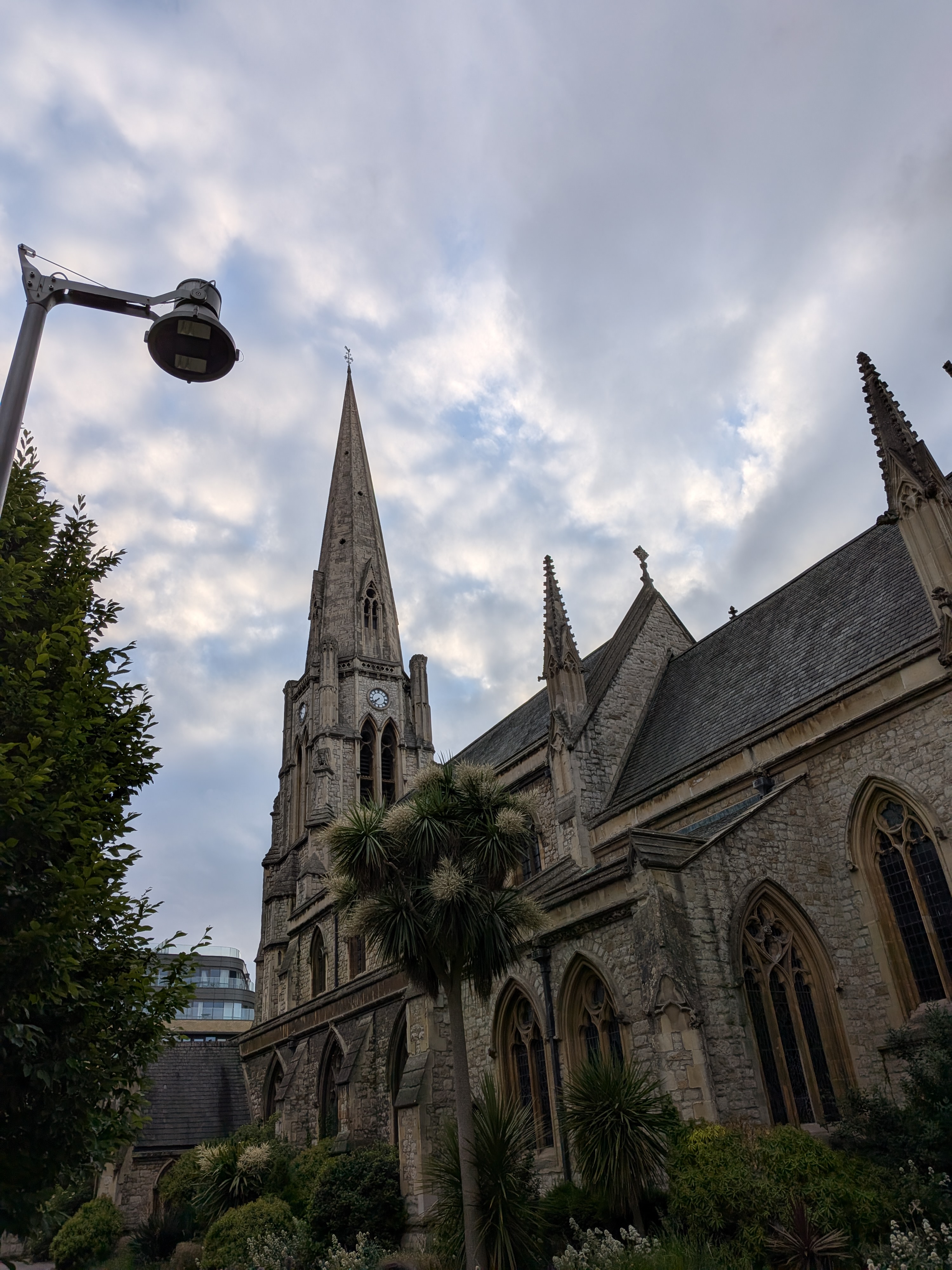
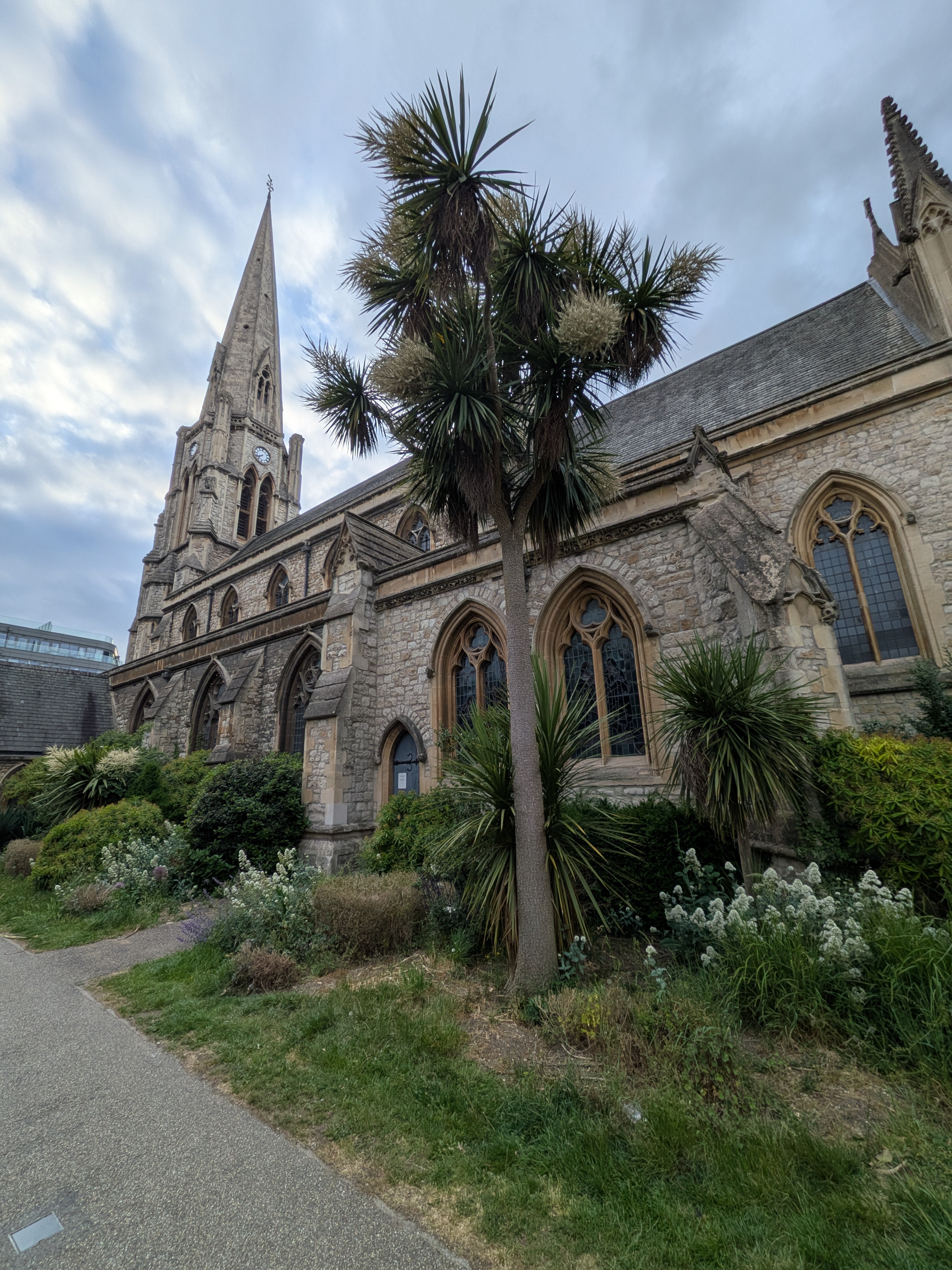

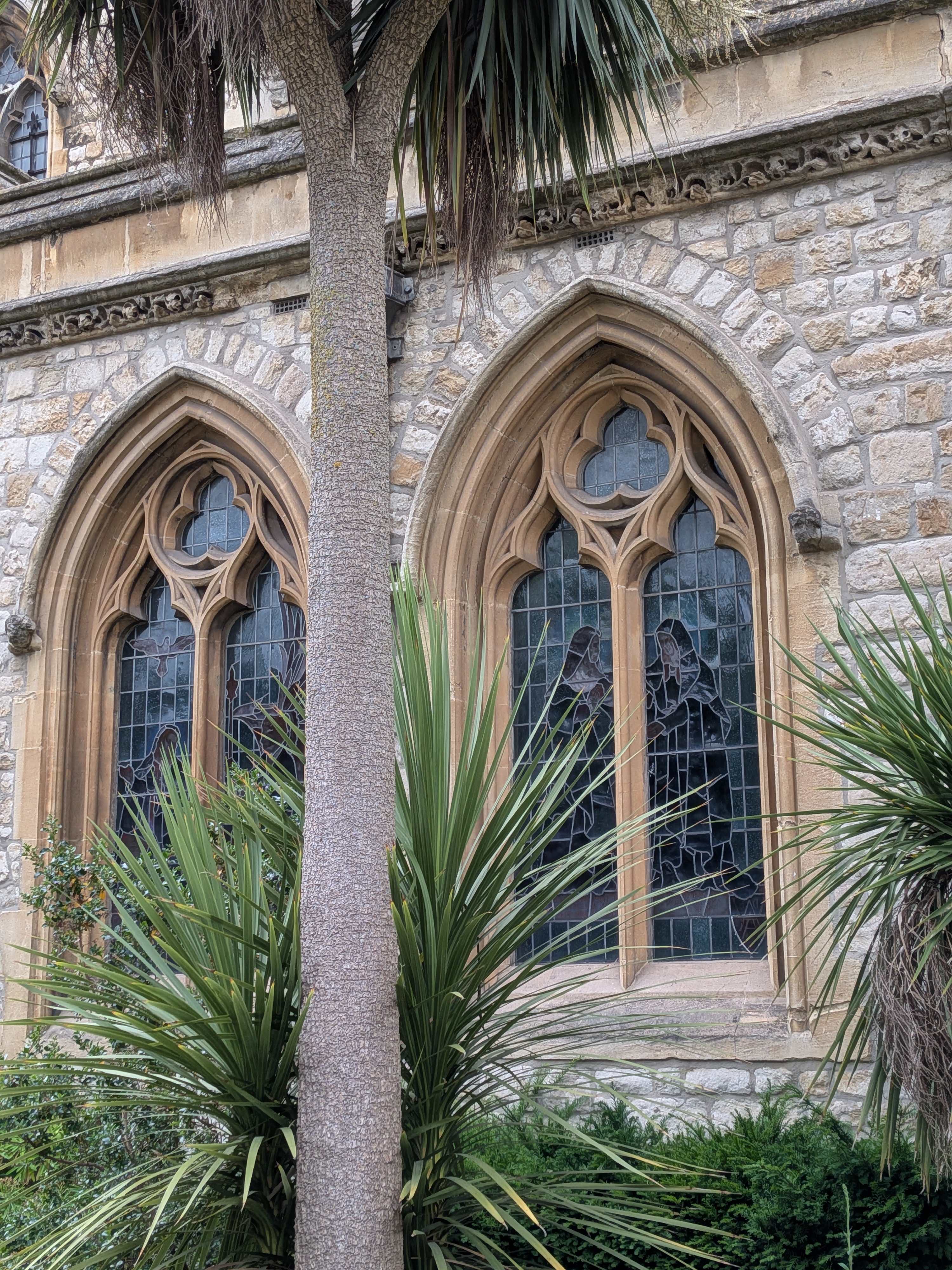

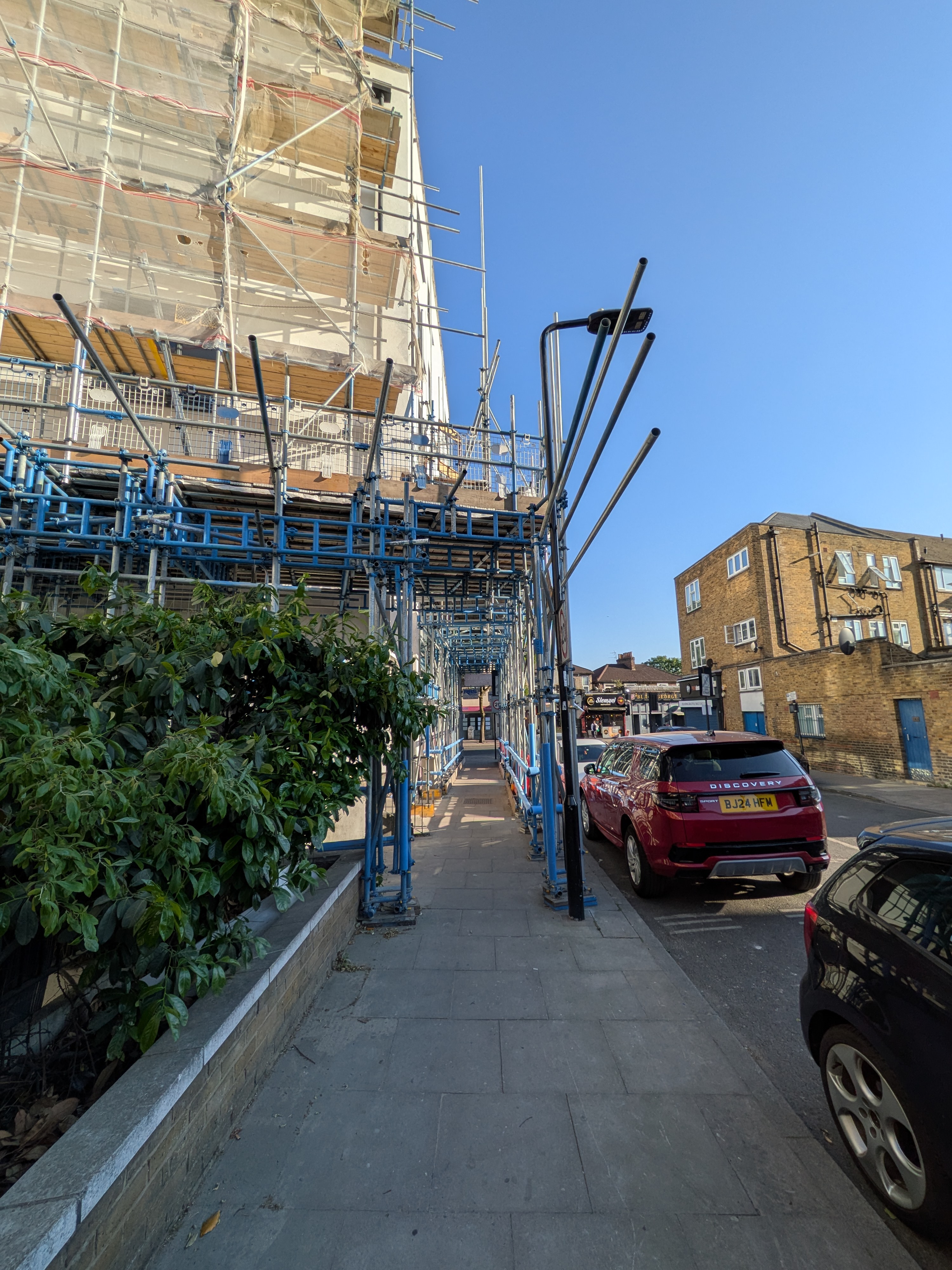
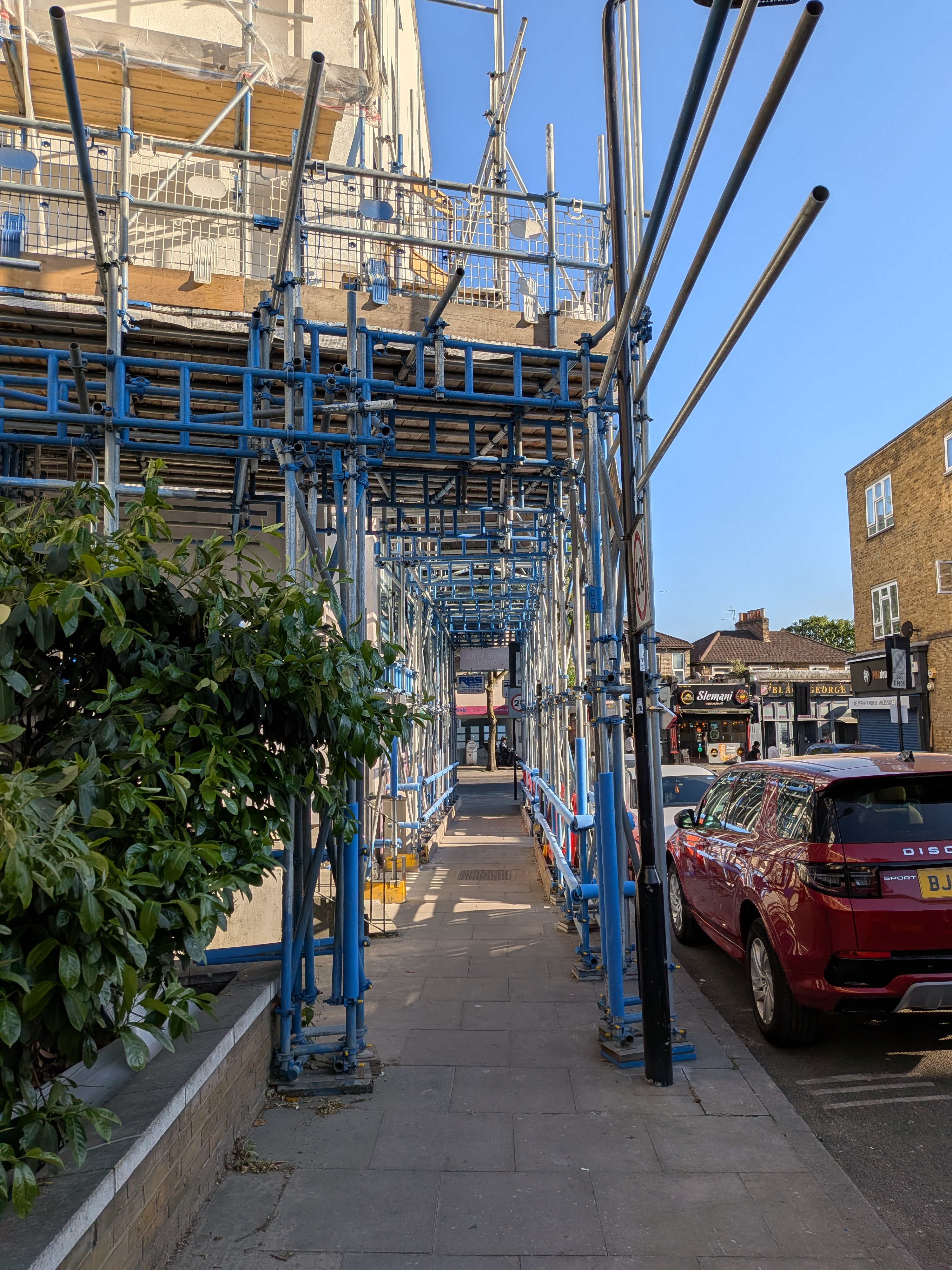
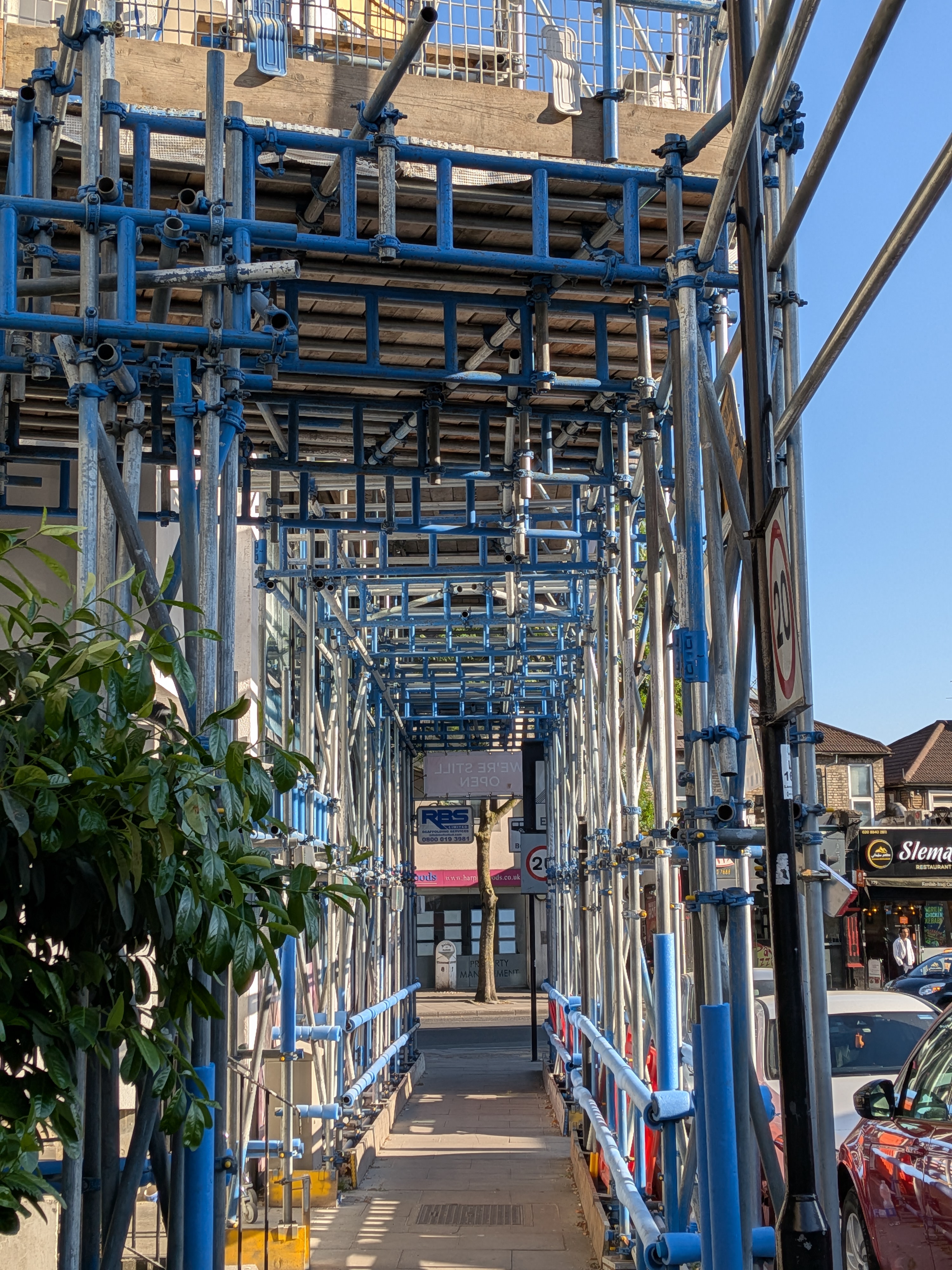
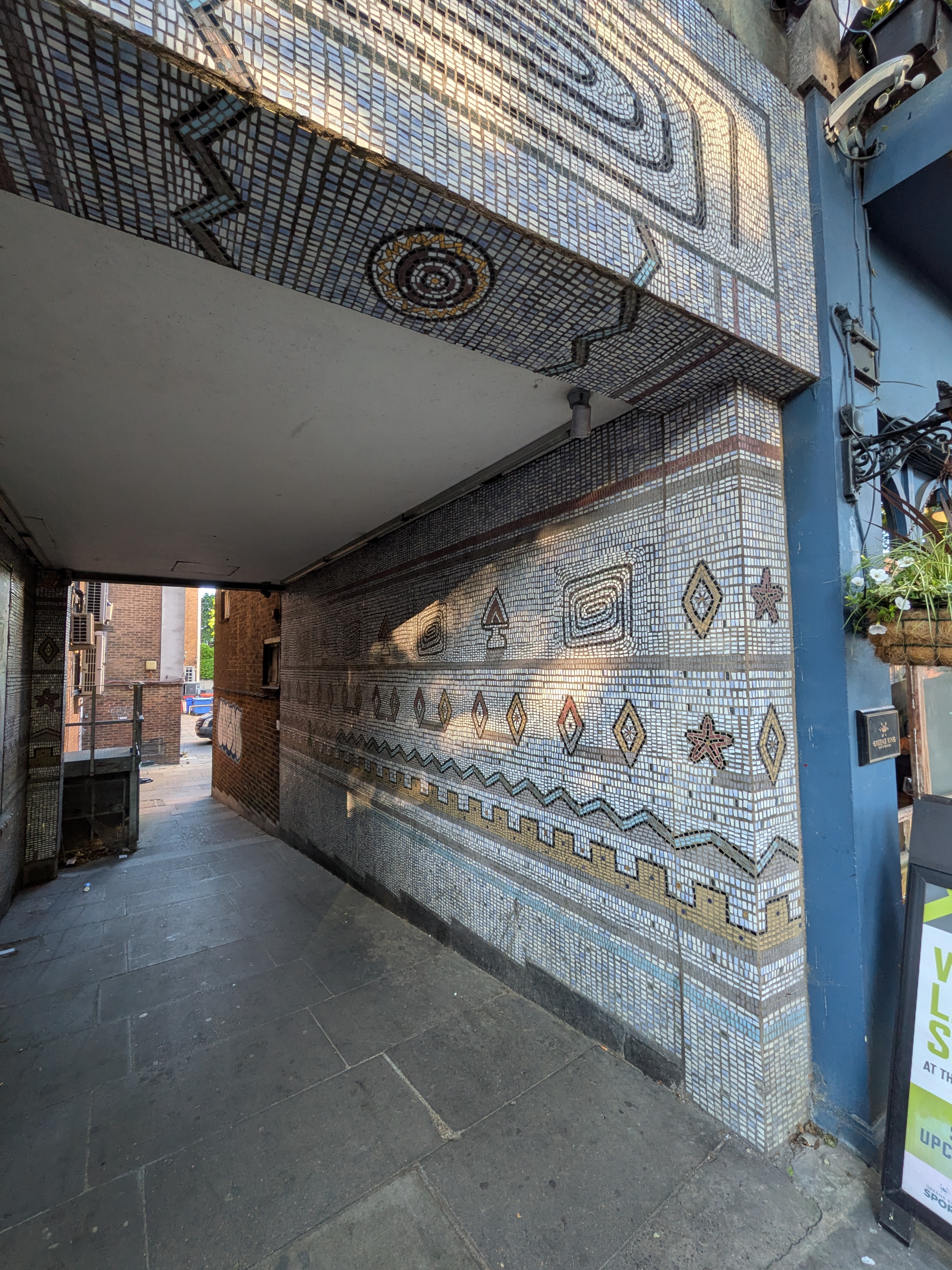

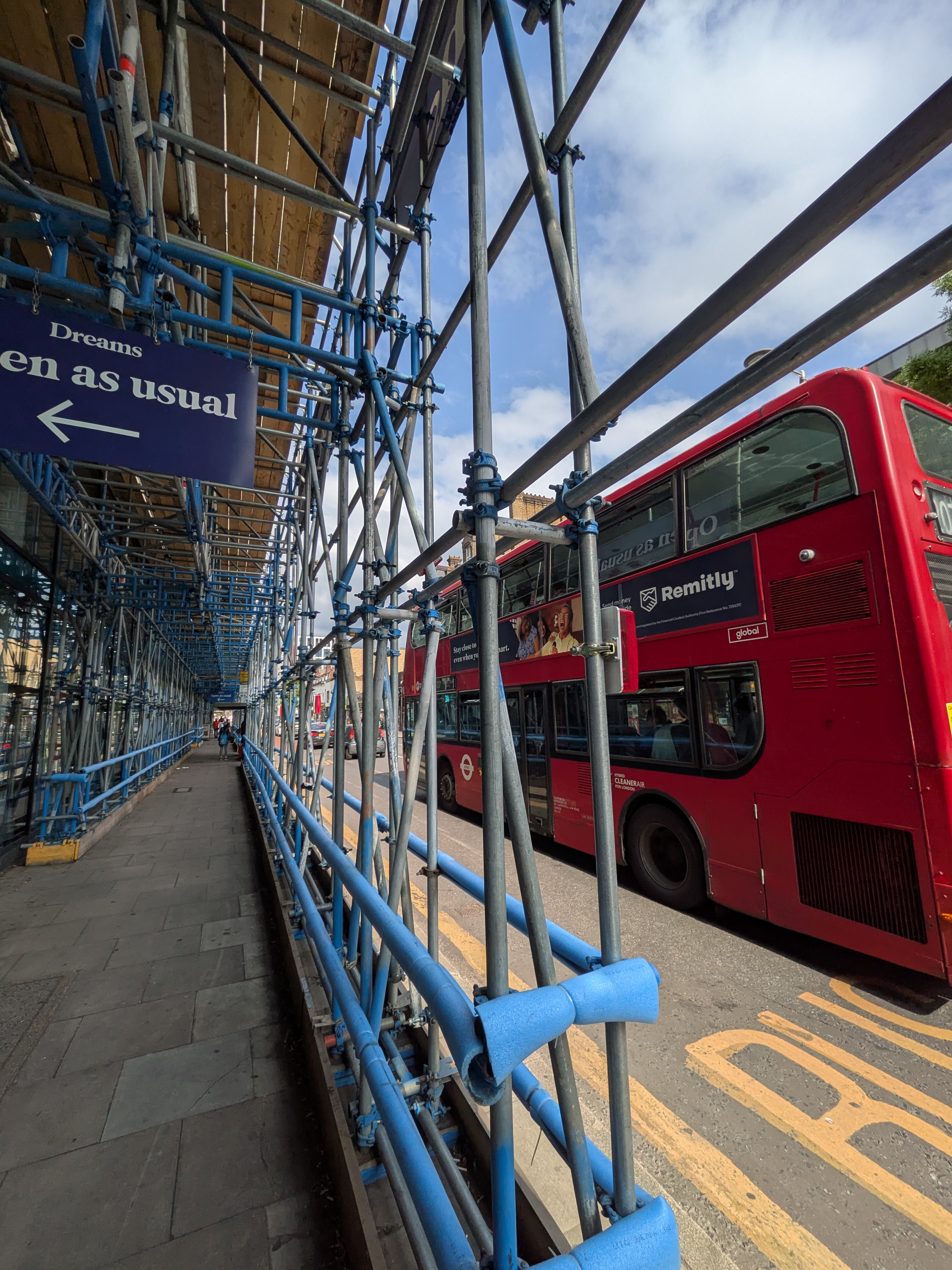
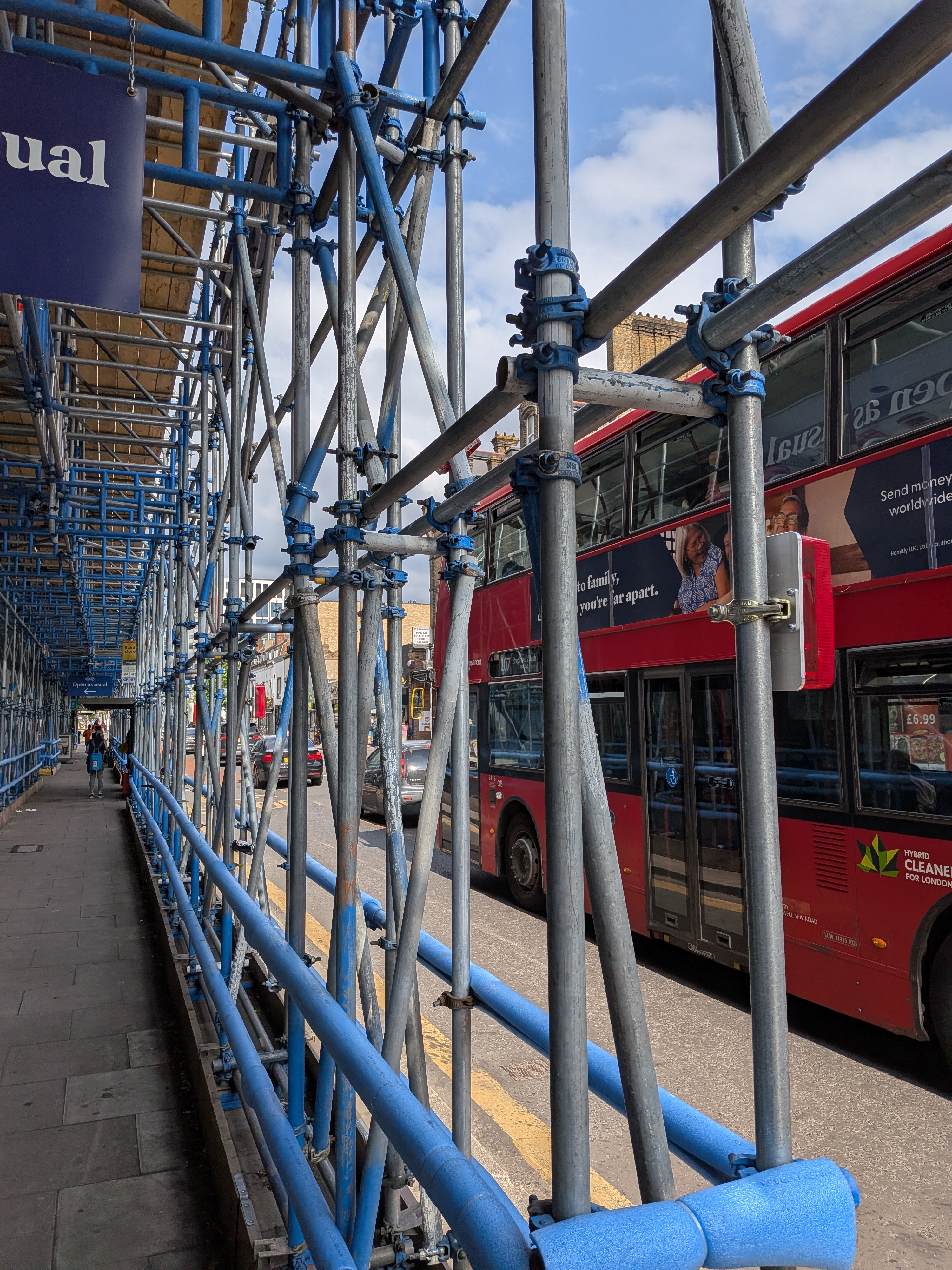
Nevertheless, with a strong portrait mode, mostly accurate skin tones in our testing, and that macro capture, there’s enough camera bang to keep the Pixel 9a competitive, even if it isn’t class-leading.
Google Pixel 9a: performance and battery
Performance is seldom a Pixel’s best attribute, with Google’s Tensor chips always falling behind MediaTek and Qualcomm’s for gaming power. When you combine two facts, though – the Pixel 9a has the same Tensor G4 as the flagship Pixel and it costs significantly less – performance is actually one of the 9a’s key selling points.
Gamers will be able to run the latest 3D games, including Wuthering Waves and Zenless Zone Zero, at medium to high graphics settings without any issues, so the main limitation when loading up your games library will be the meagre 128GB starting storage capacity of the 9a.
Considering one of the best things about the Pixel 9a is how future-proofed it is with the promise of seven years of OS updates, if you’re thinking about a phone for the long haul, we’d suggest stumping up for the 256GB version.
Running Android 15, the Pixel 9a’s interface is clean with no clutter and a handful of Google’s AI smarts on hand, including Gemini for voice assistance and Circle to Search, so you can search whatever’s displayed on-screen.
The battery has been bumped up from 4490mAh on the Pixel 8a to 5100mAh on the 9a, a welcome boost, and the phone comfortably makes it through a full day without any issues. It charges at 23W when plugged in and supports 7.5W wireless charging, the latter not often seen at the Pixel 9a’s price, so while faster charging would have been great, it’s good to have charging options.
Google Pixel 9a verdict
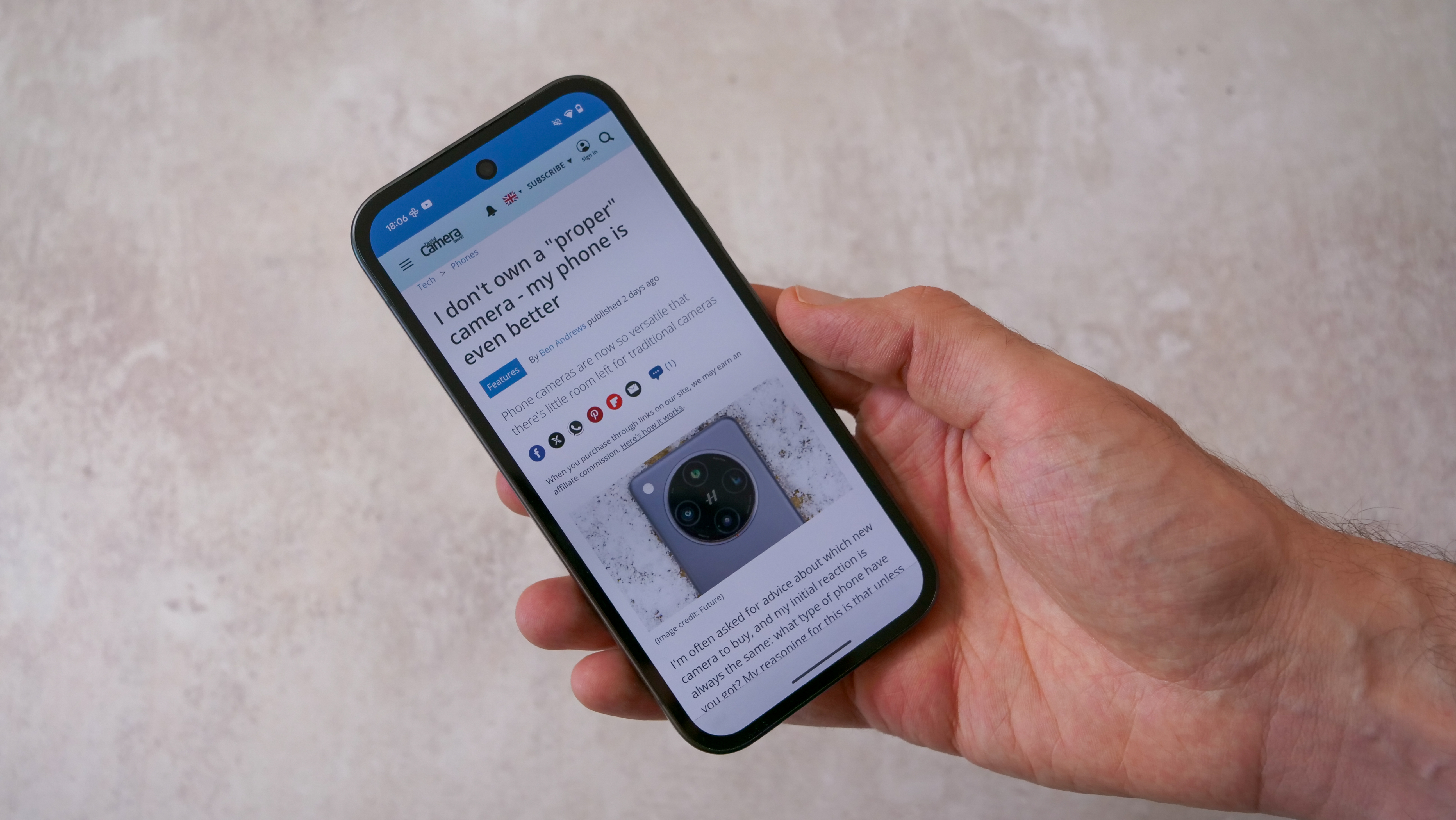
Google’s struck a basic but incredibly sensible balance with the Pixel 9a. It isn’t the best at anything in particular – the Nothing Phone (3a) Pro’s cameras are more exciting, the Poco X7 Pro is better for gaming, and the Motorola Edge 60 Fusion packs plenty of extra storage – but as a package, it’s very easy to recommend.
The Pixel 9a’s camera is typically good enough, with its main area of weakness being low-light video or low-light photos when capturing moving subjects. But in most environments, it takes a good-looking shot for the price, and matched with a clean interface and nippy performance, not to mention wireless charging, it’s packed with highlights.
So if you can handle those issues, don’t mind its blocky styling, and opt for the 256GB model for extra future-proofing, the 9a is a great package that should last for years to come.
Basil Kronfli is a freelance technology journalist, consultant, and content creator. He trained in graphic design and started his career at Canon Europe before moving into journalism. Basil is also experienced in video production, independently running the YouTube channel TechEdit, and during his time at Future, he worked alongside the Digital Camera World team as a senior video producer.
You must confirm your public display name before commenting
Please logout and then login again, you will then be prompted to enter your display name.
